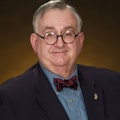The number and location of fire stations must be reevaluated periodically, but at least annually, as a community’s structures and population change. The number of stations a department should have depends, like everything else, on a balance between the costs of the stations and their maintenance, on the one hand, and the need for more stations, on the other.
If a station is located near the high-response section of a community (such as a heavily populated area of multiple-occupancy or wood-frame structures) that location will probably be appropriate. Station relocation is necessary over time if the types of hazards and the locations of most fires move to a significant distance from the station. This is an important consideration for selecting a new site for a fire station.
If a department finds that relocation or construction of a new fire station is necessary, the three issues to consider are location, station design, and funding.
Location: The location of a station in a community directly affects the total response time needed to combat fires effectively. For example, although a fire station is centrally located in a community, the majority of the responses might be at substantial distances from the station. Therefore, an evaluation of the time from receipt of an alarm to the arrival at a fire plays an important part in determining the need for relocating a fire station. The total time is the sum of the time it takes to complete each of the following five fire-fighting processes:
1. Detection: The time it takes to detect a fire. Automatic fire detection systems, such as smoke and heat detectors, give early warnings of fire and save considerable response time. Some detectors are connected directly to a fire station through a central station signaling system, whereas others sound only in the building in which there is a danger. In the latter case, detection time depends on human response and then on the number of people who are in the vicinity of the fire, how rapidly they respond, and the time of day.
2. Alarm: The time that elapses between detection of the fire and transmission of the alarm to the fire station. It depends on the availability of alarm boxes, directly connected alarms, telephones, the extent of automation, reliability, and the speed of transmission.
3. Dispatch: The time required to alert responding companies. If information is recorded automatically and if dispatchers have the most modern communication equipment, the time needed for dispatch is minimal.
4. Turnout: The speed with which personnel—paid, off-duty, and volunteers—can report for duty. Turnout depends on the location of the personnel at the time of the alarm, whether at the station, at work, or in their homes.
5. Response time: The travel time for the apparatus and on-duty personnel from the station to the fire. It depends on the distance from the station to the emergency and on the topographic, traffic, and weather conditions. When traffic is particularly heavy, the police department might be needed to aid in traveling to the fire and in beginning evacuation.
Each of these issues must be consciously considered as you work towards a decision on how and where to build a new fire station. I will have more on this critical topic in an upcoming post.

